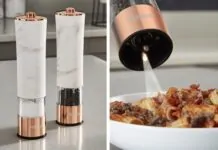
Table of Contents
Coupling is a technique to minimize unwanted resonances in the speaker and increase the speaker’s ground connectedness. It ensures the speaker’s vibration does not enter the speaker enclosure and distort the sound.
Not every speaker is coupled, and experts recommend speaker coupling for specific reasons. Before following the speaker coupling process, here’s what you need to know about speaker coupling.
Understanding the Musical Context
A speaker is a device that plays sound. Most people believe that speakers emit sine waves, while they actually emit sounds that you know as music.
There is a significant difference between music and sine waves. Sine waves are symmetric, while music is never symmetric. For example, hitting a drum or plucking the guitar string produces an initial, larger positive wave than a negative wave, making music asymmetric.
As the sound note decays, it becomes more symmetric. Once you understand this aspect of music, you will be able to understand speaker coupling better. Now that you know the musical context, let’s move on to understanding what you need to know about speaker coupling.
Why Is Speaker Coupling Essential?
According to sound experts, the speaker produces sound by vibrating a membrane. The membrane is driven by an alternating current which causes it to create the sound you hear. A critical factor in sound quality is how accurate the sound produced by the membrane is.
Ideally, no other vibrations should reach the speaker membrane in the enclosure. However, when speaker enclosures are kept on the ground, they resonate with the membrane inside. It affects the precise ability of the membrane to start and stop vibrations that are essential for producing music.
As a result, the whole sound becomes distorted. Hence, speaker manufacturers use low resonance materials like aluminum and wood to construct speakers. The speaker also includes additional bracing to prevent the enclosure from moving along with the membrane and driver.
Coupling Speaker to the Ground
The easiest way of coupling speakers is through the use of spikes. In this method, you support all four corners of the speaker through spikes that face downwards to the ground.
The spikes rest on a small round metal plate so that you don’t have to bore a hole in the ground during speaker placement. They reduce the influence of sound vibrations on the enclosure. The spiking method of coupling is mainly used for subwoofers.
How Do Spikes Work in Coupling?
When you use spikes to rest the speaker on the ground, there is a tiny contact patch. This patch serves as a low impedance path to the ground for all frequencies emanating from the speaker.
The quality of the spike is a crucial factor affecting speaker coupling. For example, if the spikes are made of inferior quality material, they will get deformed, increasing the speaker’s contact patch. It may also cause speaker imbalance. Hence, it would help if you used quality spikes for speaker coupling.
To sum up, speaker coupling is essential to improve the sound quality of the speaker. Hence, you must consider speaker coupling at home or professional venues to enhance the sound quality of your speakers.
















